4. Biochromes¶
This week I worked on researching about and experimenting with making biochromes.
Research¶
This week we explored something I had (again) never done before: biochromes. Since I didn't have access to a biolab, I focused on natural dyes. Feeding my inspiration, Surzhana sent these beautiful links of dyer friends of hers, Harumi. I find the combination of folds and pigments on the fabric particularly lovely.
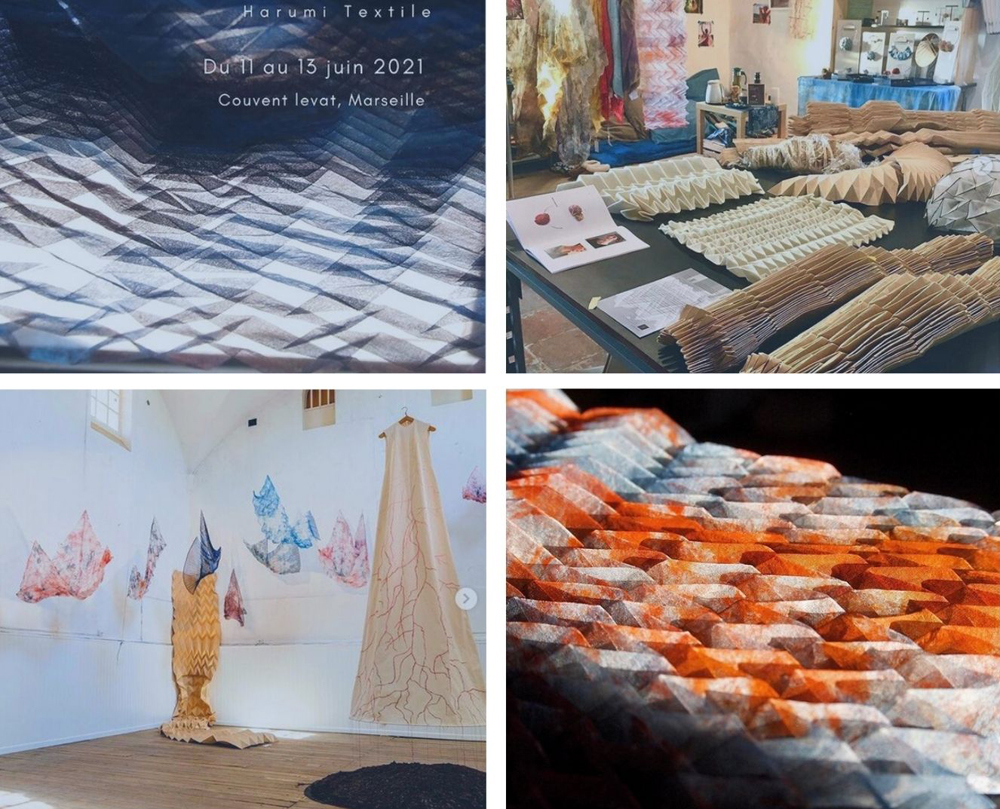 Another artist who's work I have been following for a number of years is Maura Ambrose from Folk Fibers. She's always used natural pigments for her gorgeous quilts, and recently travelled to Mexico to learn techniques from traditional dyers. Such work feels so sacred. She says that "last years quilt scraps like they’re precious stones in a mosaic, because basically that’s what naturally-dyed fabrics are - treasures from the earth."
Another artist who's work I have been following for a number of years is Maura Ambrose from Folk Fibers. She's always used natural pigments for her gorgeous quilts, and recently travelled to Mexico to learn techniques from traditional dyers. Such work feels so sacred. She says that "last years quilt scraps like they’re precious stones in a mosaic, because basically that’s what naturally-dyed fabrics are - treasures from the earth."
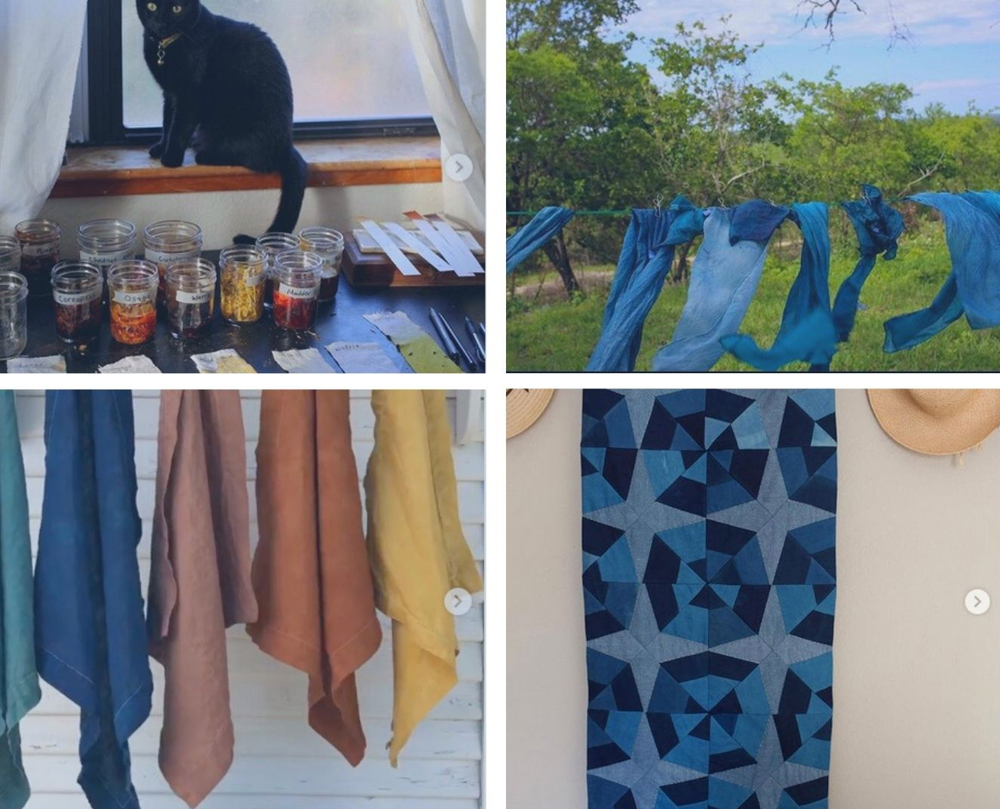 - Folk Fibers on Instagram
- Folk Fibers on Instagram
Tackling this week's challenge, I decided to take stalk of the plants around me in the gorgeous Alps and see what I could work with. I got widely enthousiastic learning about lichens, and all the different hues they can make. But since there was no storm in sight, instead of harvesting lichen from fallen branches or condemmed tree patches, I decided to pay a visit to my friends at the Palmeraie des Alpes. I walked out with Hibiscus flowers and Indigo Ferra.

Making dye baths¶
I settled for Hibiscuc, Turmeric and Avocado pits. I first scoured 100g cotton butter cloth and 100g of a cotton jersey blend with 2tbs of sodium bicarbonate first, and then mordanted the fibers with alum at 10% of the cloth's weight (20g).

Recycling dye baths¶
To extract the pigment from the dye bath, a precipitation process is needed. Use 2 parts alum, for 1 part sodium carbonate (sodium bicarbonate cooked for an hour at 200 degrees celsius); then filter. Repeat if necessary until the filtered liquid is clear. Once dry the pigments can be grounded and stored.
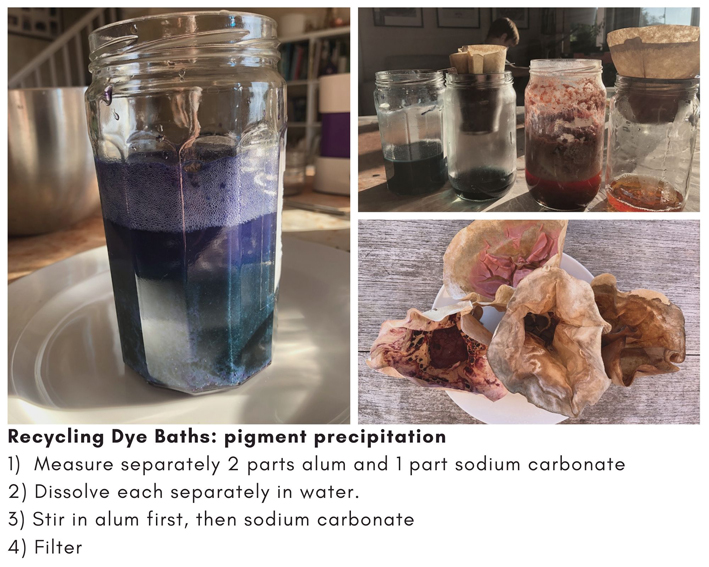
Creating inks¶
Using a red cabbage dye, we experimented modifying the Ph of the dye using various modifiers such as vinegar, sodium carbonate, iron and alum. Then we diluted 1 part of gum aguar in 9 parts of water and added that to the colors.
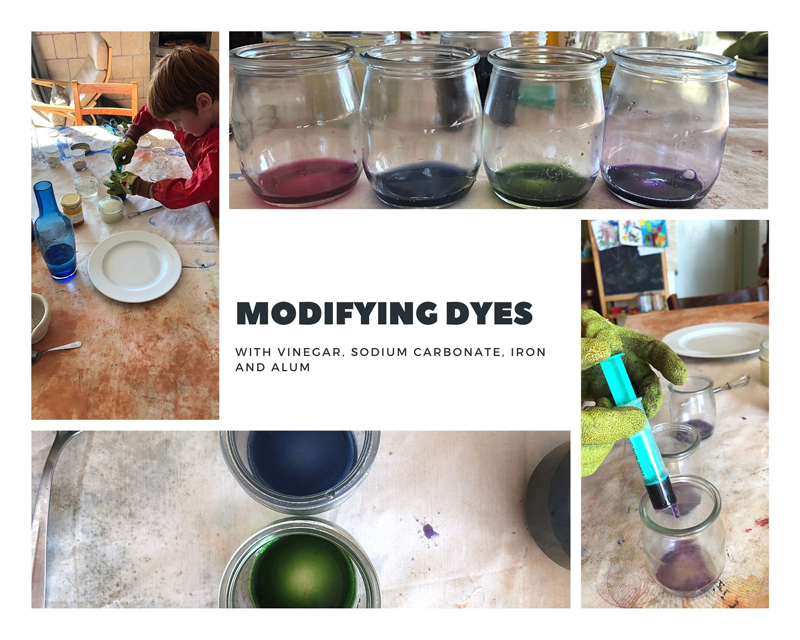
Final results¶
On this picture you can see my results dyeing cotton butter cloth and a cotton jersey blend with tumeric, madder, red cabbage, avocado pits and hibiscus.

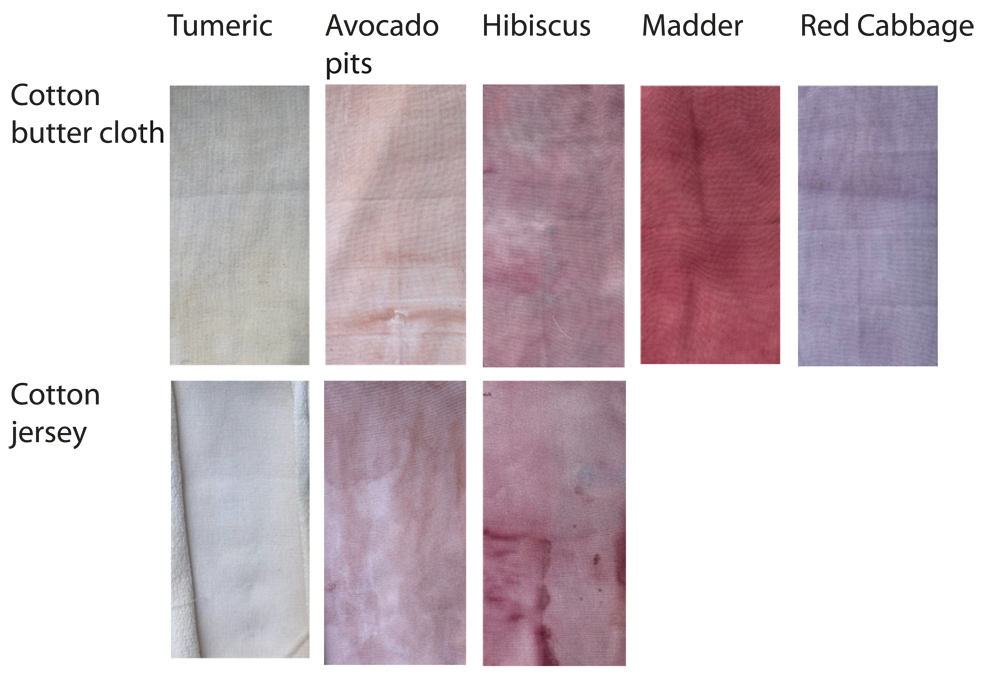
Bacterial dyes¶

On Tuesday January 25th, Pauline Gamore prepared a bacterial dye workshop for us in Oullins.
She had grown the Janthinobacterium Lividum or JBL bacteria before hand and it was ready to use.
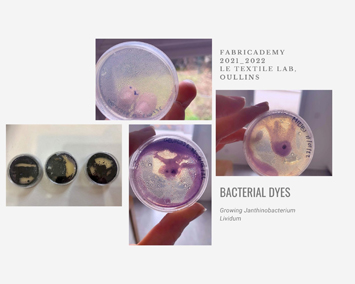
We followed all the steps outlined in Cecilia’s TCBL Bioshades workshop (download here).
Here are our results!
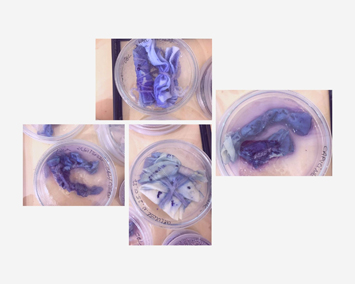 I brought samples of a cotton jersey blend and linen that I had mordanted previously (see how to mordant natural dyes link).
And here is the image of my larger piece. I would have needed to add more bacteria (it was collected and sterilized on March 24th) for the result to be more striking.
I brought samples of a cotton jersey blend and linen that I had mordanted previously (see how to mordant natural dyes link).
And here is the image of my larger piece. I would have needed to add more bacteria (it was collected and sterilized on March 24th) for the result to be more striking.
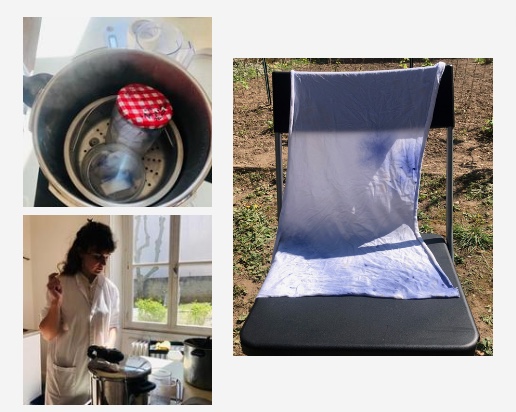
Indigo dyeing¶
On Thursday 24th of March, we made an indigo dye bath. The experience was almost cosmic. {::options parse_block_html="false" /}
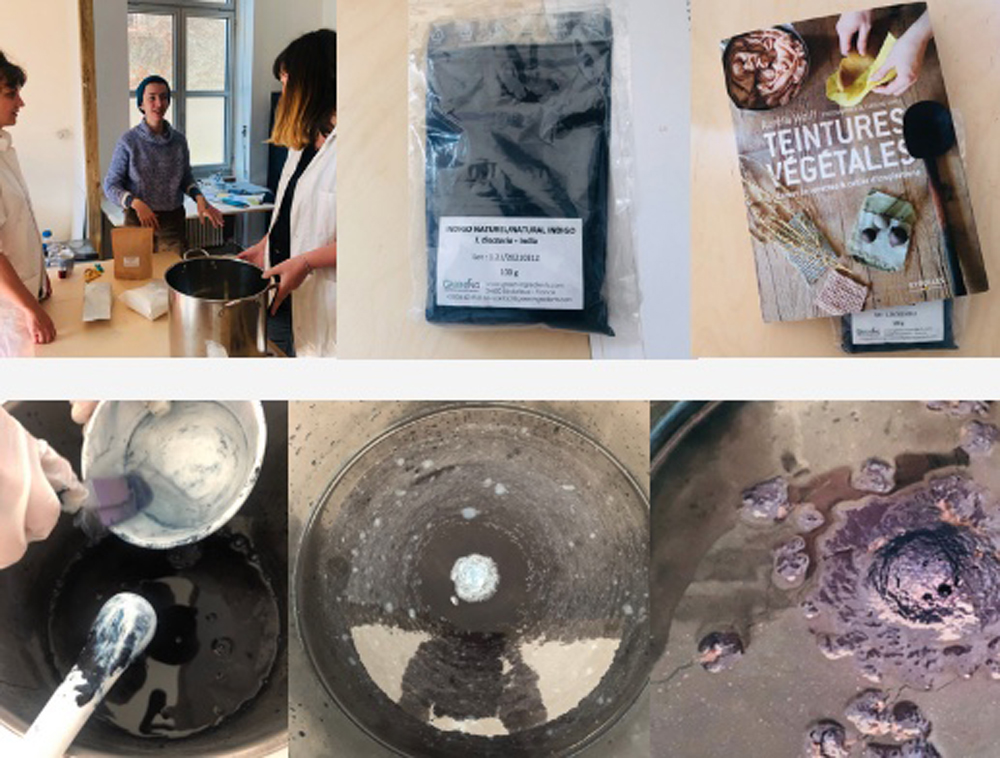
Useful links¶
- Making dye out of lichen
- Natural Dyeing with Lungwort: Exploring a Magical Lichen
- Markdown
- Make sodium carbonate from sodium bicarbonate